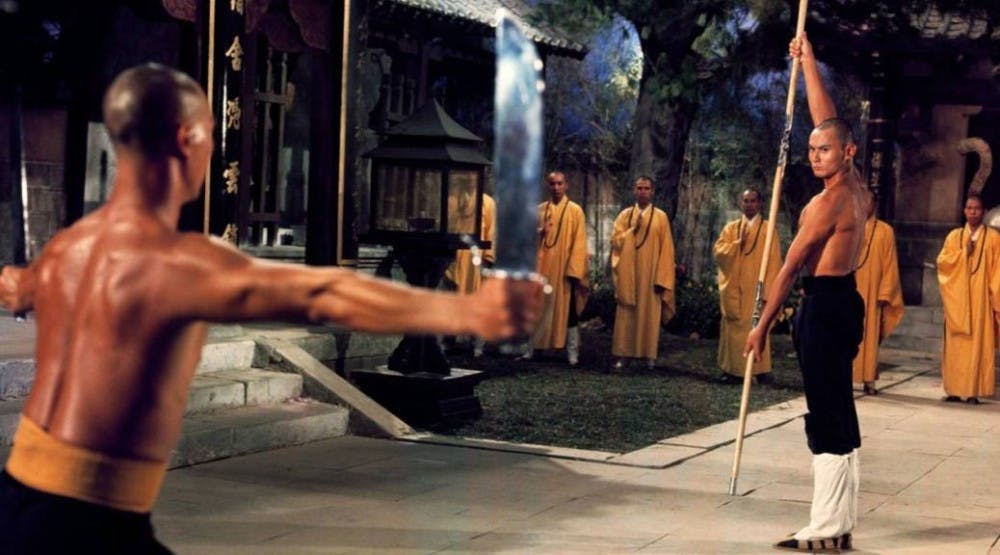“The 36th Chamber of Shaolin” is a technically brilliant movie from the legendary Shaw Studios. Its theme of resistance paired with exciting action sequences has influenced directors like RZA and Edgar Wright.
Shaw Studios is one of the most influential movie studios of all time. Runme, Runje and Runde Shaw founded their studio in 1924, and it was a multinational conglomerate by the time their younger brother Run Run created their famous central studio in Hong Kong.
“The 36th Chamber of Shaolin” follows Liu Yude, a student in a village oppressed by the Manchu government. After his family is killed, he flees to the Shaolin temple. Liu Yude becomes a monk named San Te and learns martial arts to fight back against the government.
At the time of its creation, Shaw Studios was the largest private film studio in the world. The Shaw Brothers and the studio they led are most famous for their martial arts films. Some of these films are available on Netflix, like “Five Element Ninjas ” and “The 36th Chamber of Shaolin.”
A particularly devoted fan of these films is Quentin Tarantino, who used its opening logos and fanfares in “Kill Bill: Volume 1.” “The 36th Chamber of Shaolin” has some great kinetic cinematography. Arthur Wong and Yeh-tai Huang make great use of fast zooms to create excitement. The stationary shots are well composed and have a zen-like sense of beauty. The editing in “The 36th Chamber of Shaolin” is also excellent. The fast cuts make the fights more exhilarating, and they are tempered with slow-motion scenes that add to the overall drama. Gordon Liu is thrilling to watch in his fight scenes as San Te.
He does a great job of conveying his transformation from naive student to skilled warrior monk. San Te’s training sequences are more fun to watch because the watcher knows Liu would go on to play the mentor Pai Mei in “Kill Bill: Vol. II.” The most outspoken fan of “The 36th Chamber of Shaolin” is Wu-Tang Clan frontman RZA. He used English dialogue samples from the movie on the album “Enter The Wu-Tang Clan — 36 Chambers.” He said the story of struggling against an oppressive government resonated with him as a black kid.
“The 36th Chamber of Shaolin” was also an influence for “Scott Pilgrim vs. The World.” Wright said he made his entire cast watch the film because both films share a similar view of martial arts as an arduous yet exuberant form of fighting. “The 36th Chamber of Shaolin” is one of the most memorable martial arts films that the Shaw Brothers ever made. The cinematography and editing sear the fast fights into your brain. It has influenced great artists and will likely continue to inspire young filmmakers for years to come.




